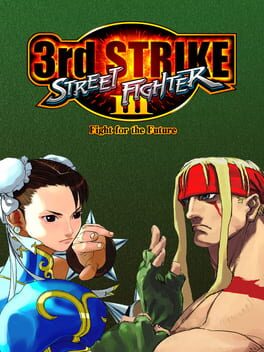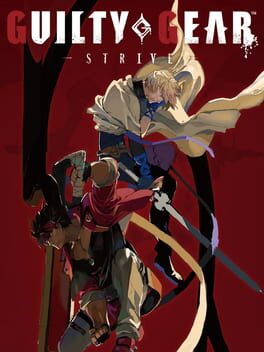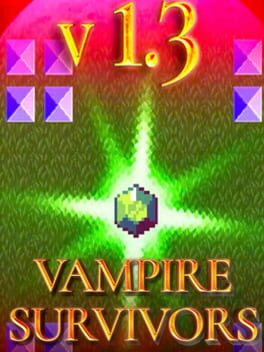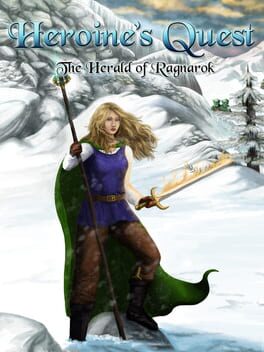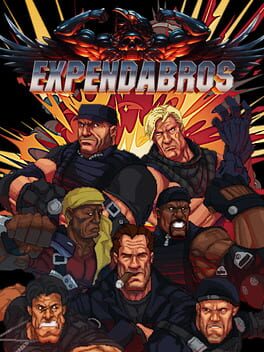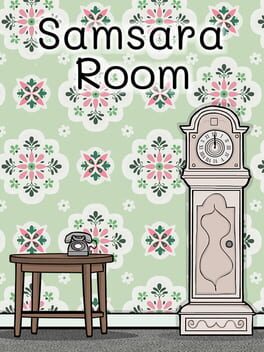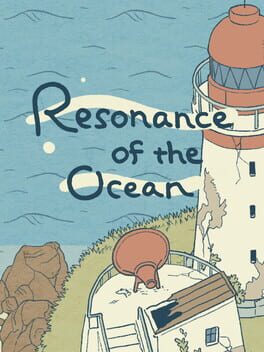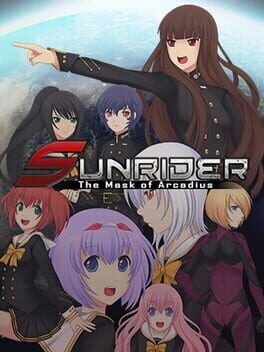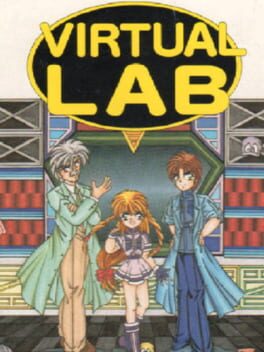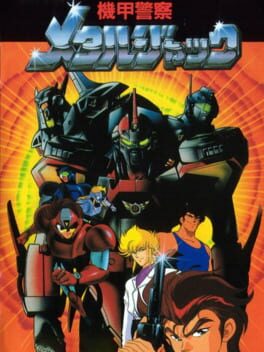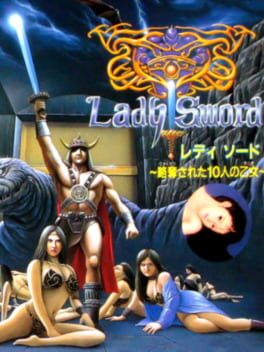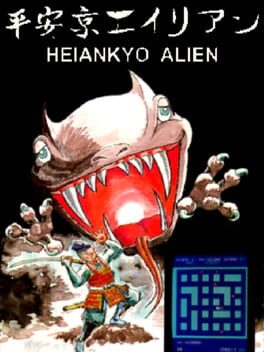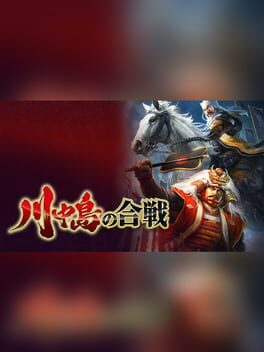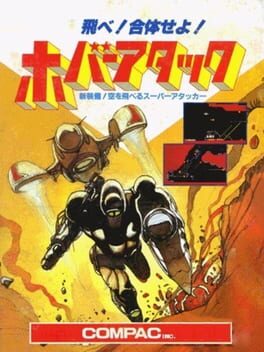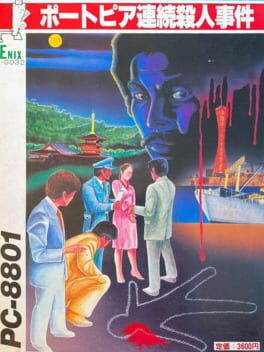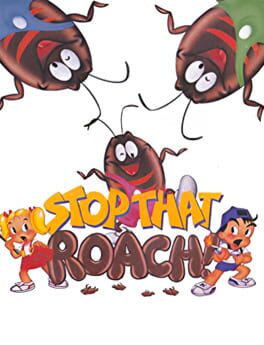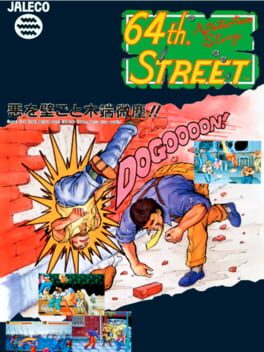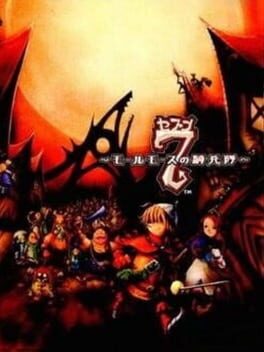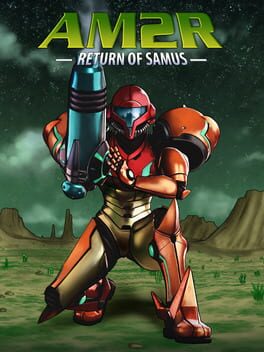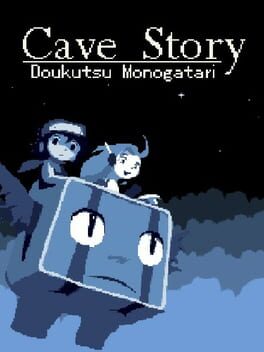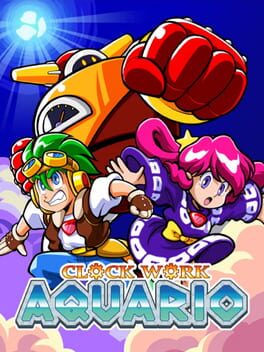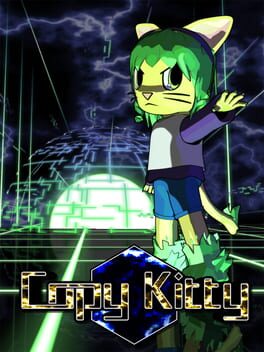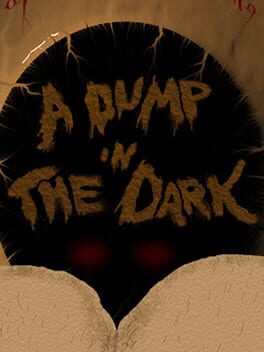radiantscorning
5 reviews liked by radiantscorning
This game's lasting power is unparalleled. Even ST does not generate the kind of attention this game continues to receive. I constantly see new people getting into this game, some of which have little to no experience in any fighting game. When all the modern, soulless, commercial, consumerist, dogshit fighting games fail, people seem to come back to this game in particular.
You can have issues with it, I have plenty of things I'd like changed in the game. You can call it overrated, it certainly receives a lot of praise. You can even make bizarre, baseless claims with your head up your ass that it's "totally broken" and "is nowhere near as balanced as new fighting games." It will outlast whatever shitty anime game you cling to. It will outlast you, yourself.
We'll never see another fighting game like it.
You can have issues with it, I have plenty of things I'd like changed in the game. You can call it overrated, it certainly receives a lot of praise. You can even make bizarre, baseless claims with your head up your ass that it's "totally broken" and "is nowhere near as balanced as new fighting games." It will outlast whatever shitty anime game you cling to. It will outlast you, yourself.
We'll never see another fighting game like it.
Guilty Gear: Strive
2021
When you boot up a fighting game, what do you want to get out of it? It could be a simple distraction, it could be to socialize with friends, it could be so you can larp as some kind of videogame wizard on a journey to fighting game perfection (that seems to be increasingly and concerningly popular). For me, when I boot up a fighting game, I want two things out of it. I want a skill based competition and I want to experience moments of player expression. When I say "player expression" I don't mean finding an opponent who plays a character in a way that completely disregards the typical values of their tool kit, rather I want a communication between players of what their habits are, what they are good at and what they are bad at. A good fighting game, to me, allows for a player who observes these habits, the strengths and weaknesses of what their opponent can and cannot do, to take advantage of these observations. You can probably assert from my score, that I don't believe strive does this well.
Before I had spent a significant amount of time examining GG as a series very, very closely in order to determine what it was about it that simply did not 'click' with me, one of my earliest negative observations I made when I was playing accent core was the fact that it felt like I was doing everything on autopilot once I got to a certain level. It felt as if I was winning matches because I had completely committed to a working formula and I was losing matches because I had either broken the formula or was simply outplayed in neutral and then got mixed over and over to death. Not really an experience rich with 'player expression' as I had described earlier. What was more shocking to me, was the fact that when I sought to improve, while I was met with the usual process of assessing matchup knowledge and optimizing certain combo routes and setplay, at the highest possible level of play the overall gameplay loop was still identical. Win neutral, force situations and suffocate the opponent as long as possible. No reactive gameplay allowed. Passivity is never correct, never optimal. You will play aggressively and only aggressively because the risk reward is skewed to only one style of play across almost the entire roster.
Almost the entire roster. Pardon this upcoming tangent, but I'm a big fan of Street Fighter Alpha 2. One of my favourite aspects of A2 is how alpha counters are balanced. To those not familiar with this fabulous game, when in blockstun every character can input a 412 motion (back, down back, down) followed by a punch or kick to counter attack for 1 bar of meter when you would normally be forced to continue blocking. Accent core has a character who has defensive options that are heavily inspired by this mechanic. They feature a variety of creative tools and option selects from these alpha counters, lending them an overall playstyle that shifts between defense and offense that is unlike the rest of the cast (though to be completely honest, the offensive part of the gameplan is the same kind of aforementioned looping suffocation I'm not particularly fond of). Fans of strive who have not played accent core may even be shocked to hear that this character is in fact in strive! Though in a form almost entirely unrecognizable.
Baiken may be the best example of how this game seems to primarily kneel to the whims of the consumers rather than the players and competitors.
"This character is popular and will sell DLC on aesthetics alone, but in the past, people who do not actually put in the effort to play her complain that her defensive playstyle and unintuitive means of opening up the opponent are not fun. Thus, we must bow to the majority who want to play her purely based on aesthetics, isolating fans of her original playstyle, even though it will mean we reduce her kit to options that make her gameplan almost completely homogeneous with the existing roster."
It really appears a LOT of the decision making, beyond this one example, was a process based on selling copies rather than fulfilling a vision. Fluff has superceded substance and strive has chosen to reject the few things that made past guilty gears truly unique in favour of broad appeal. Neuter tool kits, homogenize the cast and leave nothing up to the imagination of the player. While I felt that previous entries left little room for nuanced gameplay, this is a whole new level of monotony.
Perhaps a virtue of the coin-op days was the fact that fighting games had to be designed with intention regarding the core gameplay because if all the game could offer was visual finesse, the consumer would only drop a single quarter on the experience. Now flash is all that's needed to reel in some sorry suckers and get them to spend $100+ on your game, dlc characters, colours and stages. I would certainly know, I bought this game full price on launch with the first dlc pass. They got me. Hook, line & sinker.
I'm not trying to belittle those that enjoy strive, but I do want to understand what exactly the appeal is compared to any of the previous entries. I've still yet to see a positive review of strive that argues for something unique to the experience itself. The closest I've come across is the idea that the game is "easy to pick up" and execute. Is this really a virtue when the gameplay itself is so one note? What's the point of having easy execution if the things you are executing contribute to a gamestate that itself isn't particularly deep?
Typically, I like to end my needlessly long reviews on a somewhat positive note. Either optimism for the future or an appreciation for the things a game has done well. I struggle so much to find anything with strive. I will instead thank you for reading this review, even if you just skimmed. I hope that strive may develop something unique and defining for itself someday.
Before I had spent a significant amount of time examining GG as a series very, very closely in order to determine what it was about it that simply did not 'click' with me, one of my earliest negative observations I made when I was playing accent core was the fact that it felt like I was doing everything on autopilot once I got to a certain level. It felt as if I was winning matches because I had completely committed to a working formula and I was losing matches because I had either broken the formula or was simply outplayed in neutral and then got mixed over and over to death. Not really an experience rich with 'player expression' as I had described earlier. What was more shocking to me, was the fact that when I sought to improve, while I was met with the usual process of assessing matchup knowledge and optimizing certain combo routes and setplay, at the highest possible level of play the overall gameplay loop was still identical. Win neutral, force situations and suffocate the opponent as long as possible. No reactive gameplay allowed. Passivity is never correct, never optimal. You will play aggressively and only aggressively because the risk reward is skewed to only one style of play across almost the entire roster.
Almost the entire roster. Pardon this upcoming tangent, but I'm a big fan of Street Fighter Alpha 2. One of my favourite aspects of A2 is how alpha counters are balanced. To those not familiar with this fabulous game, when in blockstun every character can input a 412 motion (back, down back, down) followed by a punch or kick to counter attack for 1 bar of meter when you would normally be forced to continue blocking. Accent core has a character who has defensive options that are heavily inspired by this mechanic. They feature a variety of creative tools and option selects from these alpha counters, lending them an overall playstyle that shifts between defense and offense that is unlike the rest of the cast (though to be completely honest, the offensive part of the gameplan is the same kind of aforementioned looping suffocation I'm not particularly fond of). Fans of strive who have not played accent core may even be shocked to hear that this character is in fact in strive! Though in a form almost entirely unrecognizable.
Baiken may be the best example of how this game seems to primarily kneel to the whims of the consumers rather than the players and competitors.
"This character is popular and will sell DLC on aesthetics alone, but in the past, people who do not actually put in the effort to play her complain that her defensive playstyle and unintuitive means of opening up the opponent are not fun. Thus, we must bow to the majority who want to play her purely based on aesthetics, isolating fans of her original playstyle, even though it will mean we reduce her kit to options that make her gameplan almost completely homogeneous with the existing roster."
It really appears a LOT of the decision making, beyond this one example, was a process based on selling copies rather than fulfilling a vision. Fluff has superceded substance and strive has chosen to reject the few things that made past guilty gears truly unique in favour of broad appeal. Neuter tool kits, homogenize the cast and leave nothing up to the imagination of the player. While I felt that previous entries left little room for nuanced gameplay, this is a whole new level of monotony.
Perhaps a virtue of the coin-op days was the fact that fighting games had to be designed with intention regarding the core gameplay because if all the game could offer was visual finesse, the consumer would only drop a single quarter on the experience. Now flash is all that's needed to reel in some sorry suckers and get them to spend $100+ on your game, dlc characters, colours and stages. I would certainly know, I bought this game full price on launch with the first dlc pass. They got me. Hook, line & sinker.
I'm not trying to belittle those that enjoy strive, but I do want to understand what exactly the appeal is compared to any of the previous entries. I've still yet to see a positive review of strive that argues for something unique to the experience itself. The closest I've come across is the idea that the game is "easy to pick up" and execute. Is this really a virtue when the gameplay itself is so one note? What's the point of having easy execution if the things you are executing contribute to a gamestate that itself isn't particularly deep?
Typically, I like to end my needlessly long reviews on a somewhat positive note. Either optimism for the future or an appreciation for the things a game has done well. I struggle so much to find anything with strive. I will instead thank you for reading this review, even if you just skimmed. I hope that strive may develop something unique and defining for itself someday.
Tekken 4
2001
Many of the reviews praising this game have outlined it's remarkably unique and stylish aesthetics, so let's instead discuss the competitive integrity and value of Tekken 4 from a meta game perspective.
Typically, my fighting game reviews only explore the nitty gritty of the competitive metagame when I have reason to believe there are systems within the game that prevent it from allowing dynamic and nuanced competition. Those who know me would likely assume that Tekken 4 has a meta that's not particularly to my taste, with system mechanics that put aggression to the forefront and that neuter one of my favourite aspects of the series: it's movement. To my surprise, T4 has a lot going for it competitively and the assessment that the game is defined purely by jab into jab vs jab into sidestep undercuts what we actually observed during its competitive heyday. I'd like to get into some detailed specifics of things I really like that are unique to T4 and only T4, so let's get into it.
Let us start with the cast of T4, specifically let's look at the big three who defined the metagame in an almost rock, paper, scissors style. Jin had the best matchup spread in the game with an all-rounder type tool kit that afforded him everything except movement. Steve was an aggressive anti-meta but still meta option. His great matchup against Jin allowed his less strong matchups elsewhere to not matter as much because so many competitors were naturally drawn to Jin. Nina completely shuts down Steve's options, but doesn't have as strong a matchup with Jin. She's the only character in the game with good backwards movement thanks to Hayashida step and this level of evasion gives her the ability to play as a defensive character who can transition to offense with lockdown from her ivory cutter. Yes, these three define a not completely solvable meta state that, to me, is genius. Now with any metagame, it's not perfect. People will tend to skew towards whatever has the most consistency and the game's mechanics are a large part in determining that. Due to this, much like in every other game, there is still a hierarchical order and the values of rock, paper and scissors respectively are not perfectly equal. That being said, there are more characters beyond the top three, and what's nice about T4 is there is practically no character who feels redundant in their inclusion.
Xiaoyu, Paul, Heihachi, the almost entirely overhauled Kazuya, Marduk. Not only does every character in T4 play pretty wildly different, they all play almost entirely different from their entries in other Tekken titles. I've seen many T4 analyses where some broad comparisons to the original Tekken Tag Tournament have been made that fail to understand that "different" is not necessarily "bad".
A common criticism is that whiff punishment is practically absent in T4. Not only does this statement on a surface level seem a disservice, assessing match footage reveals its not even true. Creating space is certainly not as safe or as easy as it was in TTT and while this does make the game more offensive overall, it also means that characters do not rely on the same hit and run strategies of the past, in which many characters would not opt to be proactive in neutral, as it was too high risk. Kazuya, while stripped of much of his defensive presence, is granted highly rewarding counter hit options in the form of his df2 and new EWGF. He still plays the spacing game and can turtle, but he must adapt to close in when he can afford to press his advantage. I'm not trying to argue T4 has more depth in the ebb and flow of character gameplans than TTT, simply that it is very different and while the meta is rather centralized in both games, I feel that there's more variety at the highest level of play from T4 whereas in TTT, as much as I love it, is really only super fascinating at a high level if you like watching lots of risk mitigation and capitalising on opponent's mistakes.
So then, we know that T4 has variety, but what makes that variety actually good and not just a large selection of differing but boring options?
Let's start with a universal change that deepend the game. The 1 break wallpush being so difficult to break and most other throws being easier than TTT creates exceptional mind games at the wall. The low risk option, which also happens to be quite rewarding for a good chunk of characters, is to wallpush at the wall. This means that players are more prepared to break 1 throws at the wall and they have to be very quick about it given the tiny window wallpush has. With this in mind, they aren't likely going to be expecting your 2 and 1+2 throws near the wall, which creates exceptional mindgames for a lot of the cast. Characters like Nina with super damaging multithrows thrive off of this type of conditioning. It is legitimately my favourite throw system in the entire series. Throws have always been an aspect of Tekken I have found needs some refinement and it's a shame they stepped away from this system because it really is near perfect.
There are some moves that people consider "broken" that actually open up the meta to new options rather than solved gamestates, as the moniker "broken" would imply. For example, Jin's just frame laser scraper unblockable.
When getting hit by the string, some characters can use a hopkick to make themselves airborne so it won't connect properly, stopping the opponent from getting a proper launch. The decision making here depends on if you believe your opponent is good enough to hit the unblockable. You can side step and get a punish if they're too slow or block the third hit if they're too fast but if you go for a hopkick to mitigate the damage from the just frame and they don't land it, you'll be getting hit when it could have been your opportunity to go on the offensive. Much like parry baiting in 3rd Strike, there's a level of skill checking at play. Of course, at the highest level this wouldn't happen, right? Match footage from SBO 2004 showed numerous Jin's missing their unblockable and in response? Not many hopkick escapes. TomHilfiger vs Jr.Lime? TomHilfiger goes for hopkicks even though Jr.Lime misses some unblockables because he knows when it's too risky to let the unblockable connect.
We must now address the elephant in the room: wall touch of deaths. "The horror!" I hear you wail. "Infinites and ToDs are just unacceptable!" Surely no competitive game can have something like that! Oh wait, MvC2, UMvC3, 3rd strike, Alpha 3, Tekken 5, Tekken 7, etc, etc, etc. Now I'm being hyperbolic to illustrate a point, but let's look more closely at the wall ToDs in T4 before we jump to conclusions. Depending on the era of T4 you watch, certain rules were in effect regarding what stages were tournament legal. While lots of characters can get huge unscaled damage in the corners of some stages, there's not a huge amount of footage of this occuring in tournaments where said stages were legal. Perhaps it was because competitors knew that playing too passively and allowing themselves to be pushed to the wall or corner would result in their death and so, they used the strengths of pokes or evasion when the opponent's offense became too predictable to keep the opponent from continuosly pushing them back. The only character who's gameplan actually revolves around going for a ToD is Lee, because of his infinite wall combo on the arena stage, which was a go to for events that wanted to limit what stages were allowed. This makes his gameplan similar to that of Makoto's touch of stun strategy with SA2 in 3rd Strike. Lee has to struggle for positioning and condition the opponent to do what he wants so he can finish out the round. Might I remind the reader that additionally, a game of Tekken is a best of 5 rounds. If these ToDs were so present and game disrupting that they destroyed all competitive integrity, surely there would be tournament footage of these ToDs occuring numerous rounds and closing out numerous games in a high level top 16. I urge those who believe the wall ToDs ruin this game to find such footage. I'd love to see it.
To me, T4 and TTT are a superb pairing. What T4 lacks TTT has, and what TTT lacks T4 has. They compliment each other with their differences and it's what made their pairing together during the early 2000's competitive Tekken events so flavourful and diverse.
Many small decisions impacted the game in truly meaningful ways not directly observable. I highly encourage those that are interested in T4 to watch old Tougeki and Evolution footage, as I believe much of it illustrates many of the positions I have argued throughout this review. Additionally, the TomHilfiger vs. Jr.Lime replay commentated by Aris can give context to what competitive Tekken was like back then. I envy an era where competition happened purely for the love of the game, when there was no money, when play occured because the games were good and communities wanted to support games for being good.
Typically, my fighting game reviews only explore the nitty gritty of the competitive metagame when I have reason to believe there are systems within the game that prevent it from allowing dynamic and nuanced competition. Those who know me would likely assume that Tekken 4 has a meta that's not particularly to my taste, with system mechanics that put aggression to the forefront and that neuter one of my favourite aspects of the series: it's movement. To my surprise, T4 has a lot going for it competitively and the assessment that the game is defined purely by jab into jab vs jab into sidestep undercuts what we actually observed during its competitive heyday. I'd like to get into some detailed specifics of things I really like that are unique to T4 and only T4, so let's get into it.
Let us start with the cast of T4, specifically let's look at the big three who defined the metagame in an almost rock, paper, scissors style. Jin had the best matchup spread in the game with an all-rounder type tool kit that afforded him everything except movement. Steve was an aggressive anti-meta but still meta option. His great matchup against Jin allowed his less strong matchups elsewhere to not matter as much because so many competitors were naturally drawn to Jin. Nina completely shuts down Steve's options, but doesn't have as strong a matchup with Jin. She's the only character in the game with good backwards movement thanks to Hayashida step and this level of evasion gives her the ability to play as a defensive character who can transition to offense with lockdown from her ivory cutter. Yes, these three define a not completely solvable meta state that, to me, is genius. Now with any metagame, it's not perfect. People will tend to skew towards whatever has the most consistency and the game's mechanics are a large part in determining that. Due to this, much like in every other game, there is still a hierarchical order and the values of rock, paper and scissors respectively are not perfectly equal. That being said, there are more characters beyond the top three, and what's nice about T4 is there is practically no character who feels redundant in their inclusion.
Xiaoyu, Paul, Heihachi, the almost entirely overhauled Kazuya, Marduk. Not only does every character in T4 play pretty wildly different, they all play almost entirely different from their entries in other Tekken titles. I've seen many T4 analyses where some broad comparisons to the original Tekken Tag Tournament have been made that fail to understand that "different" is not necessarily "bad".
A common criticism is that whiff punishment is practically absent in T4. Not only does this statement on a surface level seem a disservice, assessing match footage reveals its not even true. Creating space is certainly not as safe or as easy as it was in TTT and while this does make the game more offensive overall, it also means that characters do not rely on the same hit and run strategies of the past, in which many characters would not opt to be proactive in neutral, as it was too high risk. Kazuya, while stripped of much of his defensive presence, is granted highly rewarding counter hit options in the form of his df2 and new EWGF. He still plays the spacing game and can turtle, but he must adapt to close in when he can afford to press his advantage. I'm not trying to argue T4 has more depth in the ebb and flow of character gameplans than TTT, simply that it is very different and while the meta is rather centralized in both games, I feel that there's more variety at the highest level of play from T4 whereas in TTT, as much as I love it, is really only super fascinating at a high level if you like watching lots of risk mitigation and capitalising on opponent's mistakes.
So then, we know that T4 has variety, but what makes that variety actually good and not just a large selection of differing but boring options?
Let's start with a universal change that deepend the game. The 1 break wallpush being so difficult to break and most other throws being easier than TTT creates exceptional mind games at the wall. The low risk option, which also happens to be quite rewarding for a good chunk of characters, is to wallpush at the wall. This means that players are more prepared to break 1 throws at the wall and they have to be very quick about it given the tiny window wallpush has. With this in mind, they aren't likely going to be expecting your 2 and 1+2 throws near the wall, which creates exceptional mindgames for a lot of the cast. Characters like Nina with super damaging multithrows thrive off of this type of conditioning. It is legitimately my favourite throw system in the entire series. Throws have always been an aspect of Tekken I have found needs some refinement and it's a shame they stepped away from this system because it really is near perfect.
There are some moves that people consider "broken" that actually open up the meta to new options rather than solved gamestates, as the moniker "broken" would imply. For example, Jin's just frame laser scraper unblockable.
When getting hit by the string, some characters can use a hopkick to make themselves airborne so it won't connect properly, stopping the opponent from getting a proper launch. The decision making here depends on if you believe your opponent is good enough to hit the unblockable. You can side step and get a punish if they're too slow or block the third hit if they're too fast but if you go for a hopkick to mitigate the damage from the just frame and they don't land it, you'll be getting hit when it could have been your opportunity to go on the offensive. Much like parry baiting in 3rd Strike, there's a level of skill checking at play. Of course, at the highest level this wouldn't happen, right? Match footage from SBO 2004 showed numerous Jin's missing their unblockable and in response? Not many hopkick escapes. TomHilfiger vs Jr.Lime? TomHilfiger goes for hopkicks even though Jr.Lime misses some unblockables because he knows when it's too risky to let the unblockable connect.
We must now address the elephant in the room: wall touch of deaths. "The horror!" I hear you wail. "Infinites and ToDs are just unacceptable!" Surely no competitive game can have something like that! Oh wait, MvC2, UMvC3, 3rd strike, Alpha 3, Tekken 5, Tekken 7, etc, etc, etc. Now I'm being hyperbolic to illustrate a point, but let's look more closely at the wall ToDs in T4 before we jump to conclusions. Depending on the era of T4 you watch, certain rules were in effect regarding what stages were tournament legal. While lots of characters can get huge unscaled damage in the corners of some stages, there's not a huge amount of footage of this occuring in tournaments where said stages were legal. Perhaps it was because competitors knew that playing too passively and allowing themselves to be pushed to the wall or corner would result in their death and so, they used the strengths of pokes or evasion when the opponent's offense became too predictable to keep the opponent from continuosly pushing them back. The only character who's gameplan actually revolves around going for a ToD is Lee, because of his infinite wall combo on the arena stage, which was a go to for events that wanted to limit what stages were allowed. This makes his gameplan similar to that of Makoto's touch of stun strategy with SA2 in 3rd Strike. Lee has to struggle for positioning and condition the opponent to do what he wants so he can finish out the round. Might I remind the reader that additionally, a game of Tekken is a best of 5 rounds. If these ToDs were so present and game disrupting that they destroyed all competitive integrity, surely there would be tournament footage of these ToDs occuring numerous rounds and closing out numerous games in a high level top 16. I urge those who believe the wall ToDs ruin this game to find such footage. I'd love to see it.
To me, T4 and TTT are a superb pairing. What T4 lacks TTT has, and what TTT lacks T4 has. They compliment each other with their differences and it's what made their pairing together during the early 2000's competitive Tekken events so flavourful and diverse.
Many small decisions impacted the game in truly meaningful ways not directly observable. I highly encourage those that are interested in T4 to watch old Tougeki and Evolution footage, as I believe much of it illustrates many of the positions I have argued throughout this review. Additionally, the TomHilfiger vs. Jr.Lime replay commentated by Aris can give context to what competitive Tekken was like back then. I envy an era where competition happened purely for the love of the game, when there was no money, when play occured because the games were good and communities wanted to support games for being good.
Fighting game fans have a very limited selection of options and I theorize that many players who invest heavily into their games of choice end up with somewhat of a "player's remorse", in which the time invested in the game doing the unfun portions (labbing, practicing combos and setplay, etc.) creates a cognitive dissonance when the experience of playing the game and having a stronger understanding of it causes the flaws to move to the forefront. Do they admit the game isn't as flawlessly designed as they once thought and accept they feel like they wasted their time trying to get good? Or do they double down and say "because I play this game, it is the best one."? I think many gear fans pick the latter and I don't blame them because much of the contradictory design philosophy is disguised as exactly what these players were drawn to in the first place.
Gear as a series is heavily focused on offense. The entire cast has offensive options that in many other more traditional (aka non-anime) fighting games would break them wide open. To remedy this, gear opts for mechanics like burst, FD, IB and so on to make it so that the incredibly strong offensive options have, what in their design team's mind, is "equally" strong defensive options. I could pick apart why I dislike practically all of gear's defensive mechanics because I think almost all of them could be designed better, but instead let's just take a core principle of game design into account. Offense wins the game. Offense is inherently stronger than defense because you cannot win without AT SOME POINT selecting an offensive option. In this sense, balance of any fighting game is always going to be skewed towards offensive play because that is what determines who wins.
This review could really be for any entry in gear's series because they all suffer from this contradiction. The overtuning of offense creates a game in which you feel out neutral, someone wins and the defender plays RPS until they guess right or react accordingly and then becomes the attacker and does the same to their opponent. When "balance" is discussed in fighting games, rarely is it a discussion of "how strong are offensive options vs defensive?" It's a matter of "how many characters are viable in the metagame?" and this is a shame to me as the former is often more important to the longevity of a game's competitive integrity. Shallow gameplay that skews too far towards offense or defense results in the things fighting game fans hate the most: timer scams, 50/50 to death, no emphasis on neutral, touch of deaths, etc, etc. These games can still be fun and even to some people's taste, but they don't make for deep compelling competition. Skewing that kind of balance centralizes games to a degree that, to me, makes them very boring.
I played gear for a good long time. I came to understand it well enough. I can safely say it isn't for me. I'll still find some of the characters fun, I'll still be able to enjoy this game for what is good about it, but it will never hold a place in my mind as a game that is thoughtfully designed or competitively interesting.
Gear as a series is heavily focused on offense. The entire cast has offensive options that in many other more traditional (aka non-anime) fighting games would break them wide open. To remedy this, gear opts for mechanics like burst, FD, IB and so on to make it so that the incredibly strong offensive options have, what in their design team's mind, is "equally" strong defensive options. I could pick apart why I dislike practically all of gear's defensive mechanics because I think almost all of them could be designed better, but instead let's just take a core principle of game design into account. Offense wins the game. Offense is inherently stronger than defense because you cannot win without AT SOME POINT selecting an offensive option. In this sense, balance of any fighting game is always going to be skewed towards offensive play because that is what determines who wins.
This review could really be for any entry in gear's series because they all suffer from this contradiction. The overtuning of offense creates a game in which you feel out neutral, someone wins and the defender plays RPS until they guess right or react accordingly and then becomes the attacker and does the same to their opponent. When "balance" is discussed in fighting games, rarely is it a discussion of "how strong are offensive options vs defensive?" It's a matter of "how many characters are viable in the metagame?" and this is a shame to me as the former is often more important to the longevity of a game's competitive integrity. Shallow gameplay that skews too far towards offense or defense results in the things fighting game fans hate the most: timer scams, 50/50 to death, no emphasis on neutral, touch of deaths, etc, etc. These games can still be fun and even to some people's taste, but they don't make for deep compelling competition. Skewing that kind of balance centralizes games to a degree that, to me, makes them very boring.
I played gear for a good long time. I came to understand it well enough. I can safely say it isn't for me. I'll still find some of the characters fun, I'll still be able to enjoy this game for what is good about it, but it will never hold a place in my mind as a game that is thoughtfully designed or competitively interesting.
CN: Discussions of Capitalist Exploitation, Health Concerns
Est. Reading time: 17 Minutes
--------------------------------------------
So, coming back around to this conundrum and recognizing it's churning out more and more updates and DLCs, I've realized I can only speak about this issue at its most abstracted, through analyzing the production of 'progression systems' in these games and then go from there. I know for some this will seem obnoxious but bear with me for a bit, I'm hoping this will get interesting.
Assuming you're at least somewhat interested in game design, which is hopefully the case if you're reading this, then I'd like to take this opportunity to encourage you to play a, what for the moment is called a 'survivor-like' like Vampire Survivors here for at least an hour or two (You can play Vampire Survivors or Magical Survival on your phone for free if you'd like, or use Bluestacks). Don't worry, I'm not going to sit here and tell you they're hidden gems or anything but they do illustrate a point about game design in general.
If one were to ask me these bear the most resemblance to the rpg genre, play something like final fantasy or diablo, and a large part of the appeal is finally reaching that next level you've been anticipating. Things tend to be measured in experience points with little bars displaying progress you can grind towards somewhere along the way these elements which used to be exclusive to rpgs began to migrate outwards slowly permeating everything. At this point that assimilation seems more or less complete. Now, many games have something similar: level up to increase your damage or get a new loot box or just so your icon will look a little more fancy.
In some cases these leveling systems don't even affect the gameplay at all, which leads to the question of why they exist in the first place? The answer is pretty obvious: people used to play quake 3 all the time just because they enjoyed it; it didn't need anything else to keep them hooked. Now if we imagine two identical versions of quake happen to release on the same Day, one with a progress system and one without, it's easy to guess which one would win a larger player base. Even if both audiences were still small, while some players won't care about the difference, others will be drawn to the progression system, in which case that version has a greater chance of surviving while the more minimalist one fades into a relevancy.
Economics fuel much of this problem with the progression system comes unlockables, and with unlockables comes micro transactions to acquire them immediately that income can be used to extend development updating the game with more content providing a feedback loop of success. This probably doesn't come as a surprise to you, but there's a more sinister way of thinking about it which you may not have struck upon yet: In a sense, games are evolving to exploit us.
Even if no individual person agrees that progression systems are a good thing, they tap into a simple desire we all have to one degree or another. If you're a fan of the metal gear series then i don't have to explain the true meaning of the word 'meme' to you but for everyone else a quick rundown the basic premise is that ideas are a little like genes successful ones get passed down to future generations while unsuccessful ones disappear. Keep in mind, this doesn't mean the idea is beneficial or detrimental to humanity, just that it perpetuates itself somehow. Progression systems could be seen as a successful 'meme' which will be difficult to eradicate. Ironically, even the metal gear series itself fell prey to this particular trend. Now that most games have something like this, it's hard to envision how another game can compete without it even if you create something enjoyable enough to survive without this meme someone else can come along, create a clone of your game, slap a progression system on it and steal your audience much like click bait. It's a selection pressure that will seemingly never go away anymore. If one were to ask me, that doesn't excuse developers or critics who rely on such tactics, but it's a reality we need to confront sooner or later. On paper wouldn't we all agree that getting better at a game yourself is much more rewarding than pretending you've gotten better by unlocking more upgrades?
It's worth examining whether your behavior aligns with your answer to that question this is why playing an idler can be beneficial, because there's few better ways to break the spell than to confront the absurdity of it all. After you've killed a thousand baddies per minute, killing a skeleton for 25 xp doesn't hold quite as much significance. Despite how it might seem at times games aren't the shit you pick up while you play them the actual game is what happens in between those moments.
When you recognize that just walking in circles and watching the number increment can be enjoyable, you recognize that there's something exploitable about the way many of us are wired. As a species we have these collective weaknesses and now more than ever games are tapping into them so either you make a conscious effort to push back or get rolled over like so much squashed dough.
-------------------------------------------
As some of you have no doubt recognized, I didn't write any of that. With the exception of the first paragraph and switching some words so that its about these 'survivor-likes' instead of about idlers, this is actually just the Full Excerpt of 'Clickerbait' by Matthewmatosis. Perhaps you realized that because you scrolled down here to see what the you were getting into ahead of time, or perhaps you know because you're already a fan of Matthewmatosis and so the disguise didn't work in the first place (I'm hoping that group will be compelled to know 'why' I was deceptive about that in the first place, hopefully you'll be rewarded to).
Regardless, let's assume that I've effectively fooled a reasonable minority of the readership that would come in contact this this piece. I'm sorry for the masquerade, but it was for an important purpose: I really wanted you to confront this. You could call this an intervention, not just for people who like this genre or title in particular, but for every videoplay enthusiast, including myself. Now that you've made it this far you might as well see what else I have to say. There is only an Est. Reading time of 10 minutes left, I believe in you!
--------------
Since the writing of this excerpt, 2 years ago. I would argue the only thing that has changed is that no longer do we all agree that 'on paper' that getting better at a system yourself is much more rewarding than the illusion that we have. Our collective sensitivity to that awareness has shifted into an embrace of these systems. So what? Illusions are fun, all videogames are illusions if you think about it! A classic comeback, I abhorrently disagree. Let's take the phenomenon of 'digital eye strain' (that is to say the pain incurred on your eyes by prolonged digital media use) into account. Games can hurt your eyes:
"The outcome measures were mostly self-reported symptoms and not objectively measured findings. The issues that were reported were related either to with prolonged near-term adaptation (i.e., blurred vision at close range, difficulty in focusing, and copious headache after screen use) and those related to dry eye syndrome (irritation/burning sensation, ocular fatigue, discomfort, photosensitivity), while symptoms due to poor posture and prolonged physical immobilization in front of the screen (such as neck pain, tension headache, and other atypical musculoskeletal pain) are also very common. Pre-existing vision problems (hyperopia / myopia, astigmatism, and adaptive disorders) can contribute to the appearance of the syndrome if they are not adequately addressed or have not yet been diagnosed" - The Impact of Internet and Videogaming Addiction on Adolescent Vision: A Review of the Literature
Or, they can help your eyes:
"Players have presented better results than non-players in a variety of tasks that involve vision but are ultimately controlled by cortical structures in the brain, especially those involved in prediction. These include enhanced contrast sensitivity, shorter saccadic reaction times with better error rates, higher spatial resolution of vision, and a variety of specific improvements on memory function and focused attention. Playing action videogames can alter fundamental characteristics of the visual system, seen as a whole, that is, including the cortical structures that are responsible for image processing, pre-emptive movements of the ophthalmic muscles." - (sic)
"Cognitive gains have been demonstrated in all test designs with relatively few hours of playing videogames, and as with all aspects of brain plasticity, gains are to be expected with frequent execution of a well-designed task that lasts for relatively little time. Hence, playing random videogames to the degree that it may cause temporary harm to the receptor organ does not correlate positively with gains in the vision process as a whole. The increased propensity of eSports during the past decade, i.e., videogaming as a form of sport competition could be a useful source of research data; playing competitively does not equate with playing excessively, yet those competitive players need to regularly exercise their skills, even spending 6 h daily of deliberate practice and various forms of non-deliberate practice that revolves around viewing others play through a digital screen. Unfortunately, published research on this niche population so far is poor." - Digital eye strain: prevalence, measurement and amelioration
Label me as histrionic if you wish, but I'm sick of appeasing that 'Videogames' are a net neutral medium, they are always either assisting or harming to some degree whether intentionally or not. Seems almost impossible to me to argue that this 1 joycon movement system isnt doing more harm than good to your eyes. Especially since play ends up pathing most of it in cyclical loops with your character always centered. This is exactly what I was trying to say when I stated that 'Although one could argue that the destruction of enemies is also a 'jackpot' reward system, I feel it's actually comparable more to just visual encouragement data like the bright candy explosions in Candy Crush, or the neon bright machines and loud sound effects of slot machines, rather those smaller moments are not the real 'jackpot' you are in pursuit of.' It's not about how randomness works, its about sensory overload.
"Although ergonomics and noise exposure are commonly documented in occupational safety research in other industries, no U.S. studies were found that assessed these hazards among U.S, casino workers. Evidence from international research suggests that these hazards are problematic for worker health in the casino environment. Furthermore, gaming workers from other countries have cited exposure to poor ergonomics; chemical hazards (e.g., cleaning products and coin dust); and biological hazards through constant interaction with clients, temperature extremes, noisy environments, flashing lights, and poor air quality. Also, casino workers in other countries have complained of pain in the lower back, shoulder, joint, neck and head, hearing loss; eye strain; respiratory and reproductive issues; and ill-health and injuries" -Occupational exposures and associated risk factors among U.S. casino workers: a narrative review
That 'tradeoff' is a literal one of sensory deterioration to your eyes and ears, that's what you were exchanging as a worth function, it was never merely your leisure time. Of course, right upon my realizing this, a close confidante I told this to stated and I quote 'I don't think that's a bad claim to make but good luck convincing gamers to care about health issues'. That led me to realize one of the most damning passages I've ever come across in my time alive on this earth:
"But, you will say, it gives rise to power and domination, to exploitation and even extermination. Quite true; but also to masochism; but the strange bodily arrangement of the skilled worker with his job and his machine, which is so often reminiscent of the dispositif of hysteria, can also produce the extermination of a population: look at the English proletariat, at what capital, that is to say their labour has done to their body. You will tell me, however, that it was that or die. But it is always that or die, this is the law of libidinal economy, no, not the law: this is its provisional, very provisional, definition in the form of the cry, of intensities of desire; 'that or die', i.e. that and dying from it, death always in it, as its internal bark, its thin nut's skin, not yet as its price, on the contrary as that which renders it unpayable. And perhaps you believe that 'that or die' is an altenative?! And that if they choose that, if they become the slave of the machine, the machine of the machine, fucker fucked by it, eight hours, twelve hours, a day, year after year, it is because they are forced into it, constrained, because they cling to life? Death is not an alternative to it, it is a part of it, it attests to the fact that there is jouissance in it, the English unemployed did not become workers to survive, they - hang on tight and spit on me enjoyed [ifs ont joui de] the hysterical, masochistic, whatever exhaustion it was of hanging on in the mines, in the foundries, in the factories, in hell, they enjoyed it, enjoyed the mad destruction of their organic body which was indeed imposed upon them, they enjoyed the decomposition of their personal identity, the identity that the peasant tradition had constructed for them , enjoyed the dissolution of their families and villages, and enjoyed the new monstrous anonymity of the suburbs and the pubs in the morning and evening." - Libidinal Economy, Lyotard, p. 111
I'm serious if you're playing this and enjoying it, you are a pervert, and thats cool! But sweetheart, this is not sustainable for you. So: Join a BDSM community or go do some E-RP to help, at the very least do some research into sadomachocism, or find more reasonable action based systems (for example I recommend Devil Daggers). Because, in this mother's opinion, Vampire Survivors is an overly cruel virtual Dom for you, and it's possible a lot of other visually excessive progression loop systems like it are to. After all, we were never meant to stare at the sun either which im sure we all remember being 'dared' to do as a kid. At least some of us anyway, all the binoclards at least. It's vital here to make it clear this is not a moral critique, exploitation simply 'is', you're free to be exploited and until the world massively changes these systems are free to exploit you. This is a health critique, if you are viewing a health critique as moral than I'm afraid that's on you to unwind.
I've left the comments open to the public on this one. For those with a bone to pick, Bon Appetit. Throw as many tomatoes at me as you wish. If you insist on still doing this, at least try this eye fitness trick while playing:
Follow the 20-20-20 rule: every 20 minutes, look at an object at least 20 feet away for at least 20 seconds.
Take care of yourself dear reader! Remember to blink!
Est. Reading time: 17 Minutes
--------------------------------------------
So, coming back around to this conundrum and recognizing it's churning out more and more updates and DLCs, I've realized I can only speak about this issue at its most abstracted, through analyzing the production of 'progression systems' in these games and then go from there. I know for some this will seem obnoxious but bear with me for a bit, I'm hoping this will get interesting.
Assuming you're at least somewhat interested in game design, which is hopefully the case if you're reading this, then I'd like to take this opportunity to encourage you to play a, what for the moment is called a 'survivor-like' like Vampire Survivors here for at least an hour or two (You can play Vampire Survivors or Magical Survival on your phone for free if you'd like, or use Bluestacks). Don't worry, I'm not going to sit here and tell you they're hidden gems or anything but they do illustrate a point about game design in general.
If one were to ask me these bear the most resemblance to the rpg genre, play something like final fantasy or diablo, and a large part of the appeal is finally reaching that next level you've been anticipating. Things tend to be measured in experience points with little bars displaying progress you can grind towards somewhere along the way these elements which used to be exclusive to rpgs began to migrate outwards slowly permeating everything. At this point that assimilation seems more or less complete. Now, many games have something similar: level up to increase your damage or get a new loot box or just so your icon will look a little more fancy.
In some cases these leveling systems don't even affect the gameplay at all, which leads to the question of why they exist in the first place? The answer is pretty obvious: people used to play quake 3 all the time just because they enjoyed it; it didn't need anything else to keep them hooked. Now if we imagine two identical versions of quake happen to release on the same Day, one with a progress system and one without, it's easy to guess which one would win a larger player base. Even if both audiences were still small, while some players won't care about the difference, others will be drawn to the progression system, in which case that version has a greater chance of surviving while the more minimalist one fades into a relevancy.
Economics fuel much of this problem with the progression system comes unlockables, and with unlockables comes micro transactions to acquire them immediately that income can be used to extend development updating the game with more content providing a feedback loop of success. This probably doesn't come as a surprise to you, but there's a more sinister way of thinking about it which you may not have struck upon yet: In a sense, games are evolving to exploit us.
Even if no individual person agrees that progression systems are a good thing, they tap into a simple desire we all have to one degree or another. If you're a fan of the metal gear series then i don't have to explain the true meaning of the word 'meme' to you but for everyone else a quick rundown the basic premise is that ideas are a little like genes successful ones get passed down to future generations while unsuccessful ones disappear. Keep in mind, this doesn't mean the idea is beneficial or detrimental to humanity, just that it perpetuates itself somehow. Progression systems could be seen as a successful 'meme' which will be difficult to eradicate. Ironically, even the metal gear series itself fell prey to this particular trend. Now that most games have something like this, it's hard to envision how another game can compete without it even if you create something enjoyable enough to survive without this meme someone else can come along, create a clone of your game, slap a progression system on it and steal your audience much like click bait. It's a selection pressure that will seemingly never go away anymore. If one were to ask me, that doesn't excuse developers or critics who rely on such tactics, but it's a reality we need to confront sooner or later. On paper wouldn't we all agree that getting better at a game yourself is much more rewarding than pretending you've gotten better by unlocking more upgrades?
It's worth examining whether your behavior aligns with your answer to that question this is why playing an idler can be beneficial, because there's few better ways to break the spell than to confront the absurdity of it all. After you've killed a thousand baddies per minute, killing a skeleton for 25 xp doesn't hold quite as much significance. Despite how it might seem at times games aren't the shit you pick up while you play them the actual game is what happens in between those moments.
When you recognize that just walking in circles and watching the number increment can be enjoyable, you recognize that there's something exploitable about the way many of us are wired. As a species we have these collective weaknesses and now more than ever games are tapping into them so either you make a conscious effort to push back or get rolled over like so much squashed dough.
-------------------------------------------
As some of you have no doubt recognized, I didn't write any of that. With the exception of the first paragraph and switching some words so that its about these 'survivor-likes' instead of about idlers, this is actually just the Full Excerpt of 'Clickerbait' by Matthewmatosis. Perhaps you realized that because you scrolled down here to see what the you were getting into ahead of time, or perhaps you know because you're already a fan of Matthewmatosis and so the disguise didn't work in the first place (I'm hoping that group will be compelled to know 'why' I was deceptive about that in the first place, hopefully you'll be rewarded to).
Regardless, let's assume that I've effectively fooled a reasonable minority of the readership that would come in contact this this piece. I'm sorry for the masquerade, but it was for an important purpose: I really wanted you to confront this. You could call this an intervention, not just for people who like this genre or title in particular, but for every videoplay enthusiast, including myself. Now that you've made it this far you might as well see what else I have to say. There is only an Est. Reading time of 10 minutes left, I believe in you!
--------------
Since the writing of this excerpt, 2 years ago. I would argue the only thing that has changed is that no longer do we all agree that 'on paper' that getting better at a system yourself is much more rewarding than the illusion that we have. Our collective sensitivity to that awareness has shifted into an embrace of these systems. So what? Illusions are fun, all videogames are illusions if you think about it! A classic comeback, I abhorrently disagree. Let's take the phenomenon of 'digital eye strain' (that is to say the pain incurred on your eyes by prolonged digital media use) into account. Games can hurt your eyes:
"The outcome measures were mostly self-reported symptoms and not objectively measured findings. The issues that were reported were related either to with prolonged near-term adaptation (i.e., blurred vision at close range, difficulty in focusing, and copious headache after screen use) and those related to dry eye syndrome (irritation/burning sensation, ocular fatigue, discomfort, photosensitivity), while symptoms due to poor posture and prolonged physical immobilization in front of the screen (such as neck pain, tension headache, and other atypical musculoskeletal pain) are also very common. Pre-existing vision problems (hyperopia / myopia, astigmatism, and adaptive disorders) can contribute to the appearance of the syndrome if they are not adequately addressed or have not yet been diagnosed" - The Impact of Internet and Videogaming Addiction on Adolescent Vision: A Review of the Literature
Or, they can help your eyes:
"Players have presented better results than non-players in a variety of tasks that involve vision but are ultimately controlled by cortical structures in the brain, especially those involved in prediction. These include enhanced contrast sensitivity, shorter saccadic reaction times with better error rates, higher spatial resolution of vision, and a variety of specific improvements on memory function and focused attention. Playing action videogames can alter fundamental characteristics of the visual system, seen as a whole, that is, including the cortical structures that are responsible for image processing, pre-emptive movements of the ophthalmic muscles." - (sic)
"Cognitive gains have been demonstrated in all test designs with relatively few hours of playing videogames, and as with all aspects of brain plasticity, gains are to be expected with frequent execution of a well-designed task that lasts for relatively little time. Hence, playing random videogames to the degree that it may cause temporary harm to the receptor organ does not correlate positively with gains in the vision process as a whole. The increased propensity of eSports during the past decade, i.e., videogaming as a form of sport competition could be a useful source of research data; playing competitively does not equate with playing excessively, yet those competitive players need to regularly exercise their skills, even spending 6 h daily of deliberate practice and various forms of non-deliberate practice that revolves around viewing others play through a digital screen. Unfortunately, published research on this niche population so far is poor." - Digital eye strain: prevalence, measurement and amelioration
Label me as histrionic if you wish, but I'm sick of appeasing that 'Videogames' are a net neutral medium, they are always either assisting or harming to some degree whether intentionally or not. Seems almost impossible to me to argue that this 1 joycon movement system isnt doing more harm than good to your eyes. Especially since play ends up pathing most of it in cyclical loops with your character always centered. This is exactly what I was trying to say when I stated that 'Although one could argue that the destruction of enemies is also a 'jackpot' reward system, I feel it's actually comparable more to just visual encouragement data like the bright candy explosions in Candy Crush, or the neon bright machines and loud sound effects of slot machines, rather those smaller moments are not the real 'jackpot' you are in pursuit of.' It's not about how randomness works, its about sensory overload.
"Although ergonomics and noise exposure are commonly documented in occupational safety research in other industries, no U.S. studies were found that assessed these hazards among U.S, casino workers. Evidence from international research suggests that these hazards are problematic for worker health in the casino environment. Furthermore, gaming workers from other countries have cited exposure to poor ergonomics; chemical hazards (e.g., cleaning products and coin dust); and biological hazards through constant interaction with clients, temperature extremes, noisy environments, flashing lights, and poor air quality. Also, casino workers in other countries have complained of pain in the lower back, shoulder, joint, neck and head, hearing loss; eye strain; respiratory and reproductive issues; and ill-health and injuries" -Occupational exposures and associated risk factors among U.S. casino workers: a narrative review
That 'tradeoff' is a literal one of sensory deterioration to your eyes and ears, that's what you were exchanging as a worth function, it was never merely your leisure time. Of course, right upon my realizing this, a close confidante I told this to stated and I quote 'I don't think that's a bad claim to make but good luck convincing gamers to care about health issues'. That led me to realize one of the most damning passages I've ever come across in my time alive on this earth:
"But, you will say, it gives rise to power and domination, to exploitation and even extermination. Quite true; but also to masochism; but the strange bodily arrangement of the skilled worker with his job and his machine, which is so often reminiscent of the dispositif of hysteria, can also produce the extermination of a population: look at the English proletariat, at what capital, that is to say their labour has done to their body. You will tell me, however, that it was that or die. But it is always that or die, this is the law of libidinal economy, no, not the law: this is its provisional, very provisional, definition in the form of the cry, of intensities of desire; 'that or die', i.e. that and dying from it, death always in it, as its internal bark, its thin nut's skin, not yet as its price, on the contrary as that which renders it unpayable. And perhaps you believe that 'that or die' is an altenative?! And that if they choose that, if they become the slave of the machine, the machine of the machine, fucker fucked by it, eight hours, twelve hours, a day, year after year, it is because they are forced into it, constrained, because they cling to life? Death is not an alternative to it, it is a part of it, it attests to the fact that there is jouissance in it, the English unemployed did not become workers to survive, they - hang on tight and spit on me enjoyed [ifs ont joui de] the hysterical, masochistic, whatever exhaustion it was of hanging on in the mines, in the foundries, in the factories, in hell, they enjoyed it, enjoyed the mad destruction of their organic body which was indeed imposed upon them, they enjoyed the decomposition of their personal identity, the identity that the peasant tradition had constructed for them , enjoyed the dissolution of their families and villages, and enjoyed the new monstrous anonymity of the suburbs and the pubs in the morning and evening." - Libidinal Economy, Lyotard, p. 111
I'm serious if you're playing this and enjoying it, you are a pervert, and thats cool! But sweetheart, this is not sustainable for you. So: Join a BDSM community or go do some E-RP to help, at the very least do some research into sadomachocism, or find more reasonable action based systems (for example I recommend Devil Daggers). Because, in this mother's opinion, Vampire Survivors is an overly cruel virtual Dom for you, and it's possible a lot of other visually excessive progression loop systems like it are to. After all, we were never meant to stare at the sun either which im sure we all remember being 'dared' to do as a kid. At least some of us anyway, all the binoclards at least. It's vital here to make it clear this is not a moral critique, exploitation simply 'is', you're free to be exploited and until the world massively changes these systems are free to exploit you. This is a health critique, if you are viewing a health critique as moral than I'm afraid that's on you to unwind.
I've left the comments open to the public on this one. For those with a bone to pick, Bon Appetit. Throw as many tomatoes at me as you wish. If you insist on still doing this, at least try this eye fitness trick while playing:
Follow the 20-20-20 rule: every 20 minutes, look at an object at least 20 feet away for at least 20 seconds.
Take care of yourself dear reader! Remember to blink!
6 lists liked by radiantscorning
by belleshade |
102 Games
by ReadOnlyMuseum |
39 Games
by WzrdLovingWzrd |
472 Games
by raccoons4444 |
23 Games
by ListMaster909k |
32 Games
